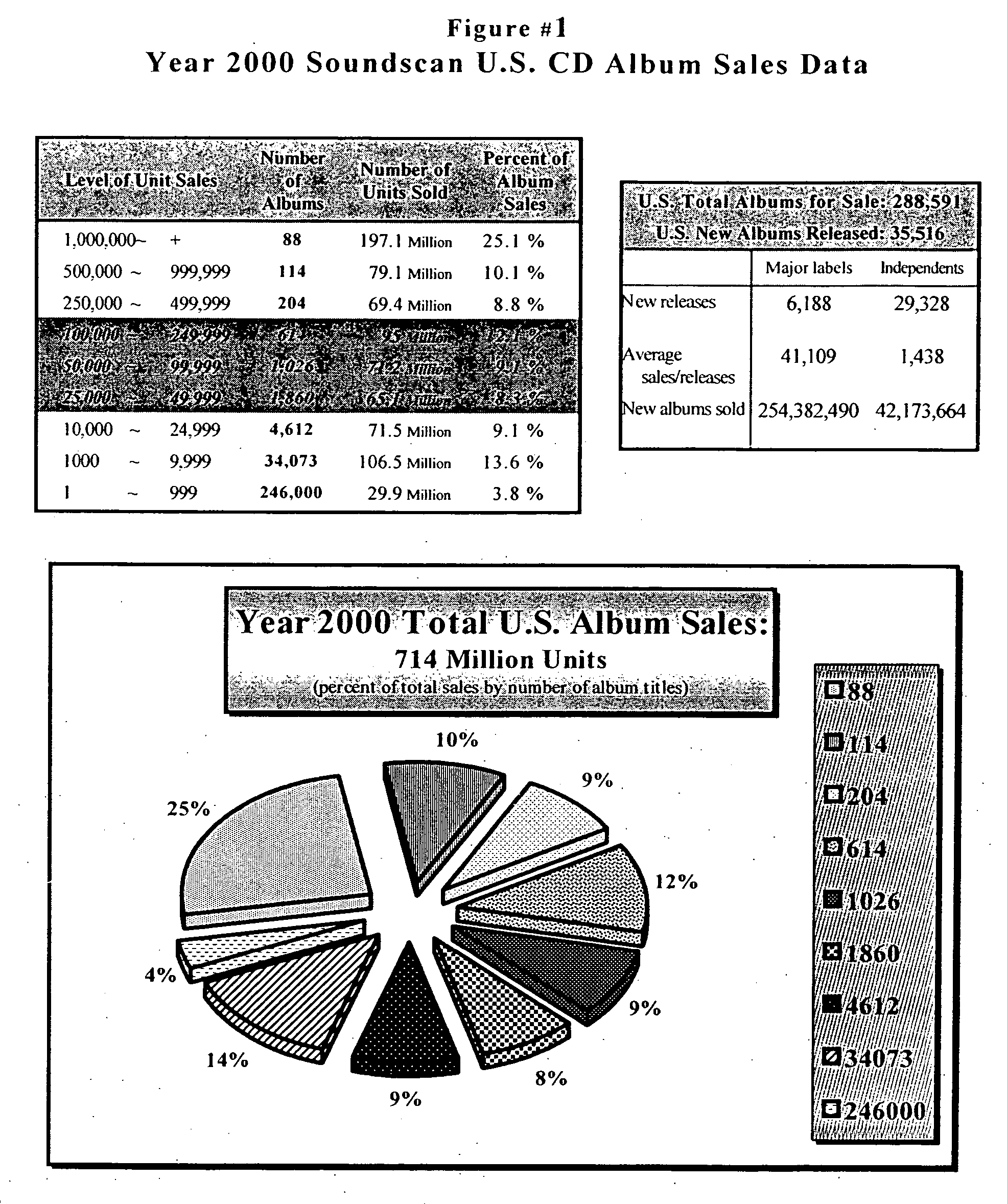First, production / acquisition costs are expended to produce or otherwise acquire ownership,
reproduction and distribution rights in and to a new sound recording, together with costs involved in satisfying the compulsory statutory requirement for mechanical licensing of the underlying compositions embodied in the new sound recording(s).
Second, pressing and distribution costs are expended to
mass-manufacture hard-copies of the new sound recording, including without limitation
piano rolls,
wax cylinders, vinyl long-playing records, vinyl 45 singles, cassette tapes, and CDs,
package and distribute these hard-copy products of the new sound recording for sale to the public through normal retail channels such as retail
record stores, mail-order catalogs or
record clubs.
Third, and commonly occurring during and after the pressing and distribution process, promotional costs are expended to promote the hard-copy product sales of the new sound recording through various and sundry promotional efforts, including without limitation obtaining radio airplay through the services of independent radio promoters, print and broadcast media advertising, use of street marketing teams, touring support for live performances of the featured act on the new sound recording, co-operative marketing efforts with retailers such as
direct payments for end-caps, shelf space and prominent physical placement of the new sound recording on
record store retail shelves, promotional “CD release parties”, and other means of
mass-marketing techniques designed to create
consumer demand for the new sound recording.
However, the street release method is unable to accommodate itself to
the Internet in the ordinary course of business.
Such file-sharing capabilities threaten the traditional music industry's bottom-line unit sales figures, upon which record labels depend in order to recover their significant advance cost investment for each new sound recording, because the industry leaders continue to manufacture open-source CDs for sale and distribution through the street release method, regardless of Internet opportunities.
Because of the significant advance cost requirements for new sound recordings, the traditional street release music distribution marketing method demands maximum unit sales for the fewest number of album releases.
Record labels expend far greater amounts promoting a few
mass-marketed albums, thus causing an industry phenomenon whereby nearly all albums released each year do not realize commercial success, nor even public attention notwithstanding the artistic talent and merit of the new sound recordings (see FIG. 1).
In light of the new Internet and
data compression / decompression technologies available, the street release method is disadvantageous to the record
label because the vast majority of new sound recordings released to the general public do not realize sufficient sales for the record
label to recover expended costs.
Vast quantities of unsold open-source CDs and other hard-copy recordings and promotional materials become waste matter destined for disposal.
This marketing method is even more disadvantageous to the recording artist because the advance costs are credited to the artist's recoupment account, which must be zeroed out before the recording artist receives
payment of his / her percentage of artist royalties on unit sales or licensing of the new sound recording.
The street release method disenfranchises the vast majority of recording artists, for whom best-efforts promotion from their record labels is impossible in a street release method that requires mass-market saturation for the record
label to break even on any given new sound recording.
This situation is even more disadvantageous to the public domain, where the general public may never be aware of the musical works of talented but “unknown” or “unpromoted” recording artists and composers.
Although compression / decompression and data
encryption technologies are available for those skilled in the music industry to utilize this new method of selling Golden digital songfiles of new sound recordings, the industry leaders cannot do so without abandoning the contractual, licensing, marketing, promotion and distribution practices common to and accepted by the mature recorded music industry.
This new business method is not only novel to those skilled in the prior art, it is so non-obvious as to be unthinkable within the business method they have so successfully developed in the pre-digital era.
However, all such prior attempts by artists, independent labels, and digital music distributors have failed to generate a viable business method, process or formula.
The failure of self-branded music destination websites may be attributed further to lack of copyright compliancy, to giving away full-length electronic samples of songs by emerging talent, without recognizing that emerging talent may not sell a single CD, regardless of the distribution channel; and to futile attempts to
aggregate distribution rights in and to a universal
database of existing sound recordings.
 Login to View More
Login to View More  Login to View More
Login to View More 


